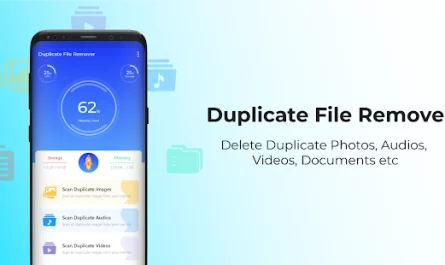React Native, an innovative framework introduced by Facebook, is making waves in the realm of mobile app development. It has become an indispensable tool, shaping the way developers create both Android and iOS applications. In our digital age, where mobile apps are integral to businesses large and small, understanding the role React Native plays in this ecosystem is crucial.

Contents
The Rise of React Native
React Native emerged from Facebook’s internal Hackathon project in the summer of 2013, and its subsequent growth has been nothing short of spectacular. The industry has seen an increasing adoption of React Native, primarily due to its ability to enable developers to code once and deploy across multiple platforms. With the ever-growing demand for efficient and cost-effective mobile app development, React Native has quickly become a favorite among developers and businesses alike.
Key Advantages of React Native in Mobile App Development
When contemplating the use of React Native for mobile app development, several advantages come to the forefront. Firstly, the framework’s code reusability and cost-effectiveness cannot be overstated: a single codebase can be used across multiple platforms, reducing development time and cost significantly. Secondly, React Native is community-driven, which ensures constant updates and improvements. Furthermore, the framework’s ‘Hot Reloading’ feature allows immediate implementation of changes without having to restart the development server. In terms of performance, React Native offers a near-native user experience, coupled with a simplified and efficient UI design process.
Key Highlights of React Native
- Cross-Platform Compatibility: React Native allows developers to write one codebase that works seamlessly on both Android and iOS platforms.
- Community Support: An active and vast community of developers consistently contributes to improving the framework, making it more robust and efficient.
- Hot Reloading: This feature enhances the developer’s productivity by allowing instant updates without the need for server restarts.
- Performance: Offering a near-native performance, React Native ensures a smooth and responsive user experience.
- Cost-Effectiveness: With its code reusability feature, React Native reduces the overall development time and cost, making it a preferred choice for businesses.
- Simplified UI design: The framework enables a straightforward and effective design process, leading to a cleaner user interface.
Real-World Examples of React Native in Action
A number of high-profile companies have reaped the benefits of using React Native for mobile app development. Case studies reveal that organizations such as Facebook, Airbnb, and Instagram have successfully incorporated React Native into their development strategy, resulting in improved efficiency and user experience.
Let’s delve into some specific examples of how React Native has been utilized effectively in real-world applications.
- Facebook: The birthplace of React Native, Facebook made use of the framework for its Ads Manager app. The cross-platform compatibility was leveraged to maintain a consistent look and feel across iOS and Android.
- Instagram: Instagram incorporated React Native to accelerate the development process. With simple UI and performance close to native apps, Instagram was able to implement new features swiftly.
- Airbnb: Although Airbnb later decided to move away from React Native, during their use, the framework played a key role in pushing out features quickly without sacrificing user experience.
Each of these examples showcases how React Native’s efficiency and adaptability has made it a useful tool in mobile app development.
The Future of Mobile App Development with React Native
With current trends pointing towards an ever-increasing demand for mobile apps, React Native is well-positioned to play a pivotal role in future developments. Predictions for the future see continued growth in the use of this framework due to its robust features, versatility, and ease of use. As more and more organizations adopt React Native, we can expect to see further improvements and advancements in the framework itself, making it an even more valuable tool for developers.
Furthermore, with the rising popularity of cross-platform app development, React Native’s ability to provide a native-like experience while reducing time and costs will likely make it a top choice for developers.
- Efficiency: React Native allows developers to build apps for both iOS and Android simultaneously, saving significant time in the development process.
- Performance: With its ability to render native components, React Native can achieve performance close to that of pure native apps.
- Community Support: React Native boasts a strong, active community that continually contributes to improving the framework.
- Facebook’s Backing: As a product of Facebook, React Native benefits from the expertise and support of one of the world’s leading tech companies.
- Hot Reload Feature: This feature allows developers to keep the app running while implementing updates, providing a real-time feedback loop and accelerating the development process.
- Reusable Code: Components written in React Native can be reused across different platforms, further reducing development time and costs.
React Native for Mobile App Development
React Native has revolutionized mobile app development with its unique approach. Here are the primary reasons to consider React Native for your subsequent mobile application project:
- Cross-Platform Compatibility: React Native is the prime choice for mobile app development due to its cross-platform compatibility. One codebase can be efficiently utilized to create applications for Android and iOS, leading to consistent user experiences across various devices.
- Development Efficiency: The hot reload feature and reusable code components of React Native significantly enhance development efficiency. Real-time updates and the ability to reuse components across platforms provide a competitive edge in rapid application development.
- Performance Assurance: With its capacity to render native components, React Native ensures near-native performance, delivering a seamless user experience.
- Robust Community Support and Facebook’s Backing: Leveraging a product of Facebook implies having robust community support. The constant efforts of this community lead to regular enhancements and updates in the framework.
- Cost-Effective: The ability to develop cross-platform apps with one codebase makes React Native a cost-effective choice. It reduces the need for separate teams for different platforms, leading to substantial savings in time and expenses.
Setting up React Native for mobile app development is straightforward, making it accessible for businesses and developers alike. Whether you’re a startup aiming for rapid growth or a well-established business looking to streamline your app development process, React Native offers a comprehensive solution.
Conclusion
In conclusion, React Native is significantly altering the landscape of mobile app development by providing an efficient, cost-effective, and high-performance solution. As we move forward, the role of React Native in shaping the future of mobile app development is likely to grow, underpinning its position as a leading framework in the industry. With its continuous growth and improvements, React Native is set to revolutionize the way we develop mobile applications. So, whether you are a business owner or a developer, it’s time to embrace React Native and unlock its full potential for your next app development project. So, why wait? Start exploring the possibilities of React Native today!




